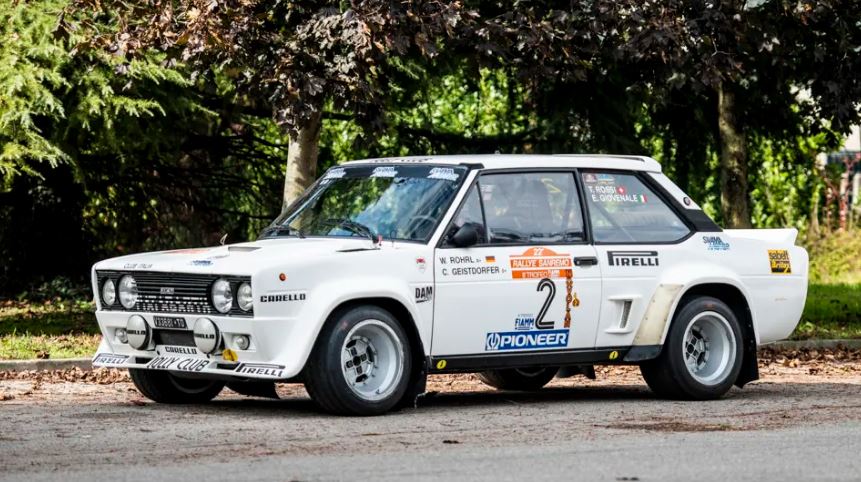When Fiat launched the 131 in 1974 it was designed as an ordinary mid-sized family car — reliable, economical and unspectacular. What turned it into was one of the most feared rally machines of the late 1970s and early 1980s, the Abarth. Fiat handed its motorsport arm the task of transforming the humble 131 into a Group 4 homologation special: Abarth reworked the mechanicals, Bertone helped assemble and style the limited run of road-going homologation cars, and the result was a surprisingly potent, agile rally weapon.
What made the 131 Abarth competitive
Rather than inventing something exotic, Abarth focused on strengthening the 131’s fundamentals. The rally 131 used a 2.0-litre inline-4 (roughly 1,995 cc in the competition spec) tuned with twin Weber carburettors, making around the 130–140 bhp mark in early Group 4 trim and with a compact, tractable torque curve well suited to mixed surface stages. The car’s suspension, brakes and chassis torsional stiffness were heavily revised for endurance and pace on gravel, tarmac and snow. To meet Group 4 homologation rules Abarth and Fiat produced the required run of road-going examples (assembled with Bertone’s help).
The livery, the drivers and the glory years
Factory 131 Abarths carried distinctive liveries — the early “Olio Fiat” blue-and-yellow, then the iconic Alitalia red-white-green scheme when the airline sponsored the team. Behind the wheel were some of rallying’s greatest names: Sandro Munari helped establish Fiat’s rally reputation, Markku Alén took the 1978 FIA Cup for Drivers behind the wheel of a 131, and Walter Röhrl grabbed the drivers’ World Rally Championship in 1980 for the Fiat camp. Timo Salonen, Michèle Mouton and others also drove 131s in top events. Those efforts paid off handsomely: Fiat won the World Rally Championship manufacturers’ title in 1977, 1978 and again in 1980, with the 131 recording numerous event victories through the late ’70s.
- Three manufacturers’ WRC titles: 1977, 1978, 1980.
- Drivers’ honours connected to the car: Markku Alén (1978 FIA Drivers’ Cup) and Walter Röhrl (1980 World Rally Drivers’ Champion) while campaigning 131s.
- Between roughly 1976–1981 the 131 family recorded some two dozen WRC event wins and established itself as a consistent, durable contender on many surfaces.
Unlike some one-off racers, the 131 Abarth retained a very usable, almost “human” character: it wasn’t outright brutal power, but excellent balance, predictable handling and mechanical robustness that let drivers push hard over long rallies. The tuned twin-carb 2.0 gave lively midrange punch; the strengthened bodywork and suspension made it survive long rallies where more fragile cars would fail. That combination — speed, reliability and ease of development — is why it turned up on podiums across Europe and beyond.
The Fiat 131 Abarth is a poster car for an era when privateer teams could take a homologated production car and race it successfully against specialist manufacturers. Its Alitalia livery remains one of rallying’s most recognizable designs, and surviving factory or works-prepared 131s are highly prized by collectors and historic-rally competitors today. The 131 helped make Abarth a household name in rally circles and cemented Fiat’s place in WRC history.
